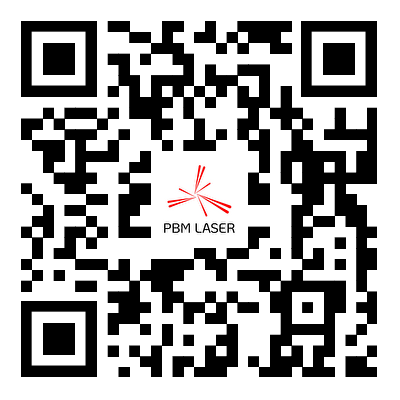
- English
- Español
- Português
- русский
- Français
- 日本語
- Deutsch
- tiếng Việt
- Italiano
- Nederlands
- ภาษาไทย
- Polski
- 한국어
- Svenska
- magyar
- Malay
- বাংলা ভাষার
- Dansk
- Suomi
- हिन्दी
- Pilipino
- Türkçe
- Gaeilge
- العربية
- Indonesia
- Norsk
- تمل
- český
- ελληνικά
- український
- Javanese
- فارسی
- தமிழ்
- తెలుగు
- नेपाली
- Burmese
- български
- ລາວ
- Latine
- Қазақша
- Euskal
- Azərbaycan
- Slovenský jazyk
- Македонски
- Lietuvos
- Eesti Keel
- Română
- Slovenski
- मराठी
- Srpski језик
VetMedix Case Sharing丨Application Case of pet laser therapy in Treating Sterile Panniculitis
2025-11-12
Introduction
Sterile panniculitis is a common subcutaneous tissue condition in pets, typically manifesting as subcutaneous nodules or masses. The affected skin appears red and warm, and some pets may experience a localized increase in skin temperature. In severe cases, the nodules can ulcerate and exude fluid, potentially leading to local tissue adhesion.
pet laser therapy is currently an advanced treatment method in veterinary surgery for sterile panniculitis. It utilizes pet laser therapy at specific wavelengths to precisely irradiate the subcutaneous inflammatory area. This method is safe, non-invasive, offers significant analgesic and anti-inflammatory effects, and has no drug side effects. It can penetrate the surface layer of subcutaneous adipose tissue, rapidly inhibit the activity of inflammatory factors, reduce swelling and nodules, improve local microcirculation, deliver nutrients to the damaged adipose tissue, alleviate pain and itching, reduce secondary damage caused by licking and biting, accelerate subcutaneous tissue repair, and significantly shorten the treatment cycle.
This case study fully documents the process of using the VetMedix veterinary laser device to treat a pet with sterile panniculitis, providing an intuitive understanding of how pet laser therapy can dispel discomfort and revitalize the health of pets suffering from subcutaneous inflammation.
01 Case Presentation

Name: Xiao Mo
Breed: East German Shepherd
Sex: Male
Body Weight: 35kg
Acute/Chronic: Chronic
Past Medical History: None
Chief Complaint: Sterile Panniculitis
02 Diagnosis

Diagnosis - Sterile Panniculitis
03 VetMedix pet laser therapy Treatment Plan
Treatment Dates: 2025.10.1 - 2025.10.8
Treatment Course: Once daily laser physiotherapy, for 8 days total
Treatment Mode: Protocol mode, Canine - Chronic - Skin - 25cm²
Affected Area Technique: Using the standard treatment head, vertically irradiate the areas where panniculitis occurred (covering all inflammatory sites) and the regions affected by the inflammation. Irradiate each area for 1-2 minutes, ensuring even energy distribution.
Undergoing VetMedix Pet Laser Therapy
04 Treatment Results
After VetMedix Pet Laser Therapy
05 Case Summary
Short-Term Recovery:
After the team at Hefei Luyang District Qifangdong Pet Hospital administered VetMedix pet laser therapy to the affected pet, the subcutaneous discomfort symptoms significantly improved. Redness, swelling, and heat at the affected site subsided, with no exudation; the pet no longer flinched or vocalized when the area was touched, and reduced licking and biting behaviors were observed. Mental state markedly improved, and appetite returned to pre-illness levels.
Long-Term Follow-up:
The pet underwent a comprehensive re-examination at the hospital after discharge. Subcutaneous tissue examination showed complete resolution of inflammation, with no nodules, no redness or swelling, and no signs of disease recurrence. Overall health status was good, with no abnormal reactions observed, and daily routine returned to normal.
Conclusion
This case strongly demonstrates the significant effect of pet laser therapy in treating sterile panniculitis in small animals. pet laser therapy utilizes photobiomodulation (PBM) to perform non-invasive treatment on small animals. By improving local blood circulation in the subcutaneous tissue, promoting the metabolism of inflammatory factors, and reducing the sterile inflammatory response in adipose tissue, while simultaneously alleviating pain and itching and reducing secondary damage caused by licking and biting, it significantly shortens the recovery period for sterile panniculitis. This provides a safer and more comfortable treatment option for pets suffering from this condition.
06 Hospital Introduction
Hospital Introduction:
Hefei Luyang District Qifangdong Pet Hospital, established in 2014, provides comprehensive services including pet/animal medical care, transportation, grooming, humane disposal, animal disease prevention and control, and logistical support for working dogs within Anhui Province.




